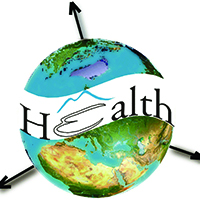Spatio-temporal trends and distribution patterns of typhoid disease in Uganda from 2012 to 2017

All claims expressed in this article are solely those of the authors and do not necessarily represent those of their affiliated organizations, or those of the publisher, the editors and the reviewers. Any product that may be evaluated in this article or claim that may be made by its manufacturer is not guaranteed or endorsed by the publisher.
Authors
Typhoid disease continues to be a global public health burden. Uganda is one of the African countries characterized by high incidences of typhoid disease. Over 80% of the Ugandan districts are endemic for typhoid, largely attributable to lack of reliable knowledge to support disease surveillance. Spatial-temporal studies exploring major characteristics of the disease within the local population have remained limited in Uganda. The main goal of the study was to reveal spatial-temporal trends and distribution patterns of typhoid disease in Uganda for the period 2012 to 2017. Spatial-temporal statistics revealed monthly and annual trends of the disease at both regional and national levels. Results show that outbreaks occurred during 2015 and 2017 in central and eastern regions, respectively. Spatial scan statistic using the discrete Poisson model revealed spatial clusters of the disease for each of the years from 2012 to 2017, together with populations at risk. Most of the disease clustering was in the central region, followed by western and eastern regions (P <0.01). The northern region was the safest throughout the study period. This knowledge helps surveillance teams to i) plan and enforce preventive measures; ii) effectively prepare for outbreaks; iii) make targeted interventions for resource optimization; and iv) evaluate effectiveness of the intervention methods in the study period. This exploratory research forms a foundation of using Geographical Information Systems (GIS) in other related subsequent research studies to discover hidden spatial patterns that are difficult to discover with conventional methods.
How to Cite

This work is licensed under a Creative Commons Attribution-NonCommercial 4.0 International License.
PAGEPress has chosen to apply the Creative Commons Attribution NonCommercial 4.0 International License (CC BY-NC 4.0) to all manuscripts to be published.













